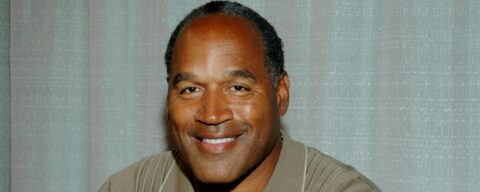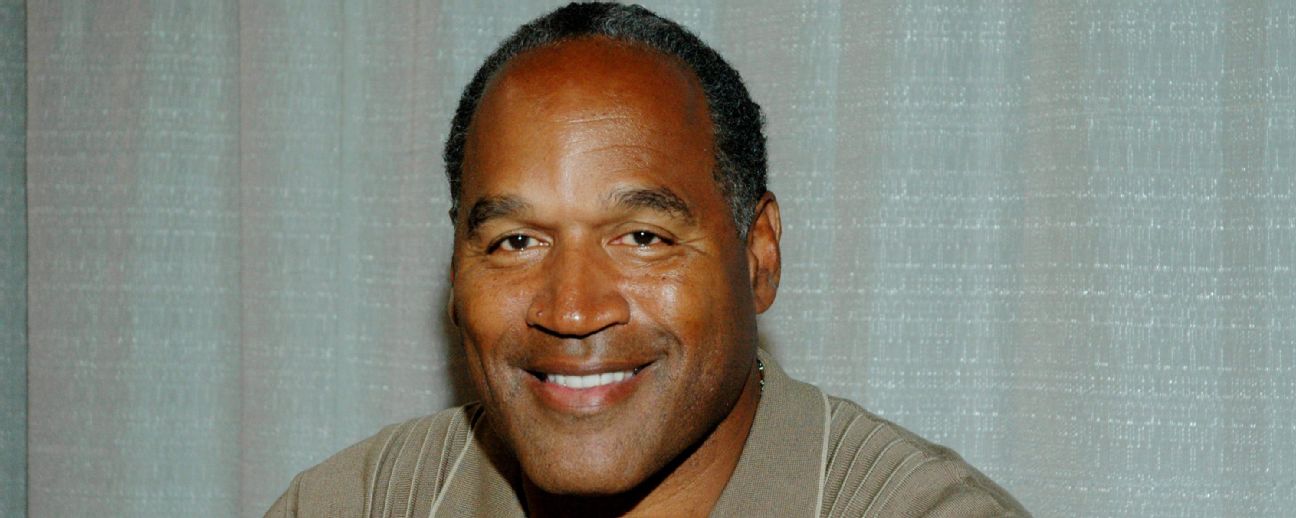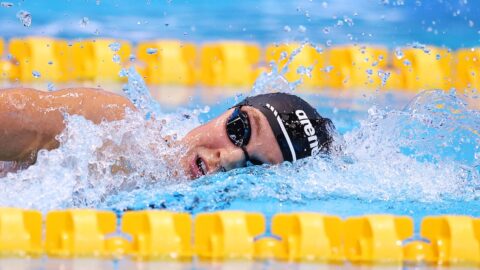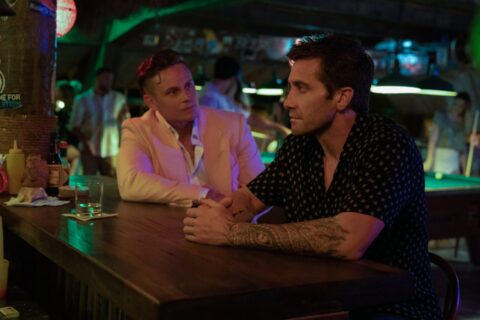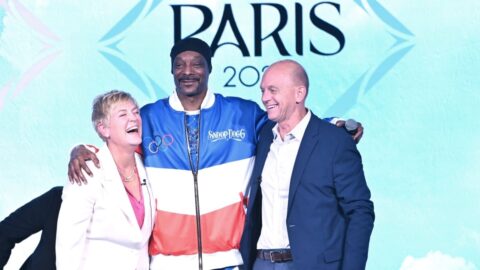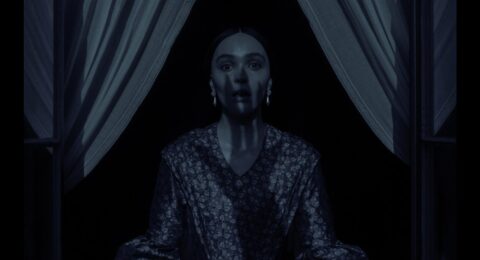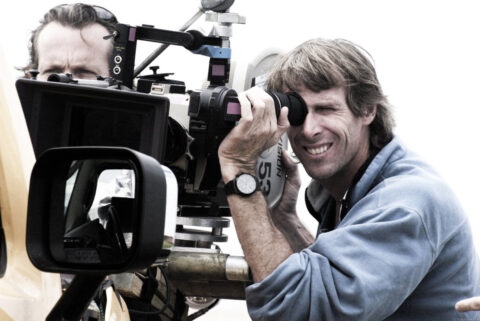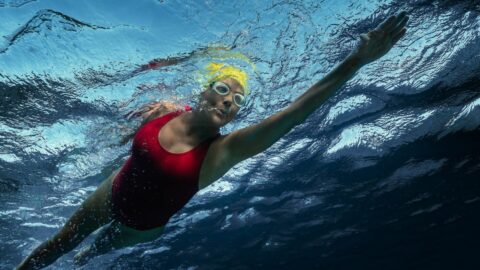r/RateMyNudeBody is a subreddit where people post their nudes and strangers to rate out of ten – by choice.
This Indie Game Captures The Alluring Liminality Of Pools
For a lot of people, indie game POOLS will lean into horror territory. While the walking simulator doesn’t have any monsters chasing you down, the liminal design of its environment is very capable of unsettling the player. Long, interconnected rooms of tiling and oddly-shaped bodies of water sloshing back and forth…

British Swimming Championships 2024 livestream: Watch live swimming for free
Live stream the 2024 British Swimming Championships for free from anywhere in the world.
‘Road House’ review: Jake Gyllenhaal’s remake is a limp handshake
Patrick Swayze remains the supreme Dalton.
Snoop Dogg can’t wait to ‘shake it up’ at the 2024 Olympics
Snoop Dogg talks about his upcoming gig covering the 2024 Olympics in Paris for NBC.
2024 Movie preview: From ‘Mean Girls’ to ‘Joker: Folie à Deux’ and beyond
Want to know what’s coming to theaters and streaming in 2024? We’ve got you covered.
‘Bad Boys 2’ is Michael Bay at his best, giving into his worst impulses
After 20 years, the 2003 sequel to Bay’s 1995 feature debut, Bad Boys, still towers above the rest of his filmography as his greatest monument to crass maximalist entertainment.
‘Nyad’ Review: An exciting drama buoyed by Annette Bening and Jodie Foster
Netflix’s “Nyad,” starring Annette Bening and Jodie Foster, hits familiar biopic beats but works nonetheless. Review.

Formulaic at first glance, the feel-good sports drama Nyad hits every beat you’d expect, but it nails some of them with enough precision that it becomes a rapturous experience. Co-directed by married couple Jimmy Chin and Elizabeth Chai Vasarhelyi (the Oscar-winning team behind the rock-climbing documentary Free Solo), it tells the real story of a renowned long-distance swimmer coming out of retirement, chronicling her herculean attempts — alongside her team of friends and experts — to push the limits of the human body and spirit by completing an arduous 80-hour swim from Cuba to Miami.
Buoyed by a stellar ensemble, the movie just about conquers its shortcomings in the story department. When Nyad isn’t distracted by biopic conventions, it’s a surprisingly effective procedural about a complicated endeavor, supported by lifelike, multidimensional performances that help it transcend its appearance as a run-of-the-mill “inspirational” Hollywood hagiography.
Unfortunately, when it drops the ball, its flaws are especially noticeable, as it becomes suddenly reliant on a traumatic backstory in ways that, at best, feel narratively misplaced. However, thanks to its unyielding focus on physical strain and suffering — it’s the aquatic Passion of the Christ — it maintains enough stakes and sporadic intensity to get by.
What is Nyad about?

Credit: Netflix
In August 1978, a 28-year-old Diana Nyad tried and failed to become the first woman to swim from Havana to Key West, a media spectacle the movie relives in its opening scenes using archival news footage. Most biopics relegate their real-life videos and photographs to their closing credits, but this introduction through the lens of reality helps draw a straight line between the younger version of Diana — who would go on to retire a year later — and the fictionalized version we follow who is in her early sixties, played by Annette Bening.
The curt, sour-faced Diana tends to keep most people at a distance, except for her best friend, Bonnie Stoll (Jodie Foster). The duo dated decades ago but have now become each other’s most important confidants. Bonnie also tries to play wing-woman to Diana, though given the former swimmer’s penchant for directing the flow of the conversation towards her past achievements, this seldom works out. Now 60, Diana drifts through life, unable to find a new purpose as she relives the glory days in the back of her mind — until it hits her. Cuba-to-Miami was the one mountain she was never able to climb. So now she’s going to try again.
Undeterred by every naysayer (including Bonnie, who eventually joins up as her personal trainer), Diana begins reacquainting herself with long-distance swims while planning for the event. Together, they attempt to rope in sponsors, lifeguards, health experts and, most importantly, a navigator to captain a small vessel alongside her as she swims, in order to keep her on course. Back in ’78, she first attempted the feat while swimming in a lengthy shark cage, but now she also wants to be first person to complete the route without one, which experts deem nearly impossible even for athletes at their physical peak.
The film does skirt around some of the real details of this achievement — major ones, like the fact that the route had in fact been completed once before, by Walter Poenisch in July of ’78 — and while movies shouldn’t necessarily be beholden to reality, there’s an iffiness surrounding this particular case. Julia Cox’s screenplay is based on Diana’s 2015 memoir Find a Way, but the athlete herself has proven to be a problematic source on occasion. There’s even an entire website dedicated to debunking and fact-checking her claims, though you wouldn’t clock any of this controversy from the movie, which, if anything, treats Diana as too honest (often gratingly so, to those around her).
At the very least, one has to wonder if the filmmakers didn’t leave valuable dramatic material on the table by not contrasting Diana’s late-in-life drive to complete the swim despite her naysayers with the fact that the real Diana had once smeared Poenisch, who was 64 at the time of his swim, for being too old to complete the route himself. (Poenisch is never mentioned in the film.) Despite Chin and Vasarhelyi’s background in documentary filmmaking, little in their approach to Nyad suggests a search for the truth beyond the confines of the script — the film’s chronology is presented objectively, its subject’s perspective never questioned — though as first-time feature filmmakers, it’s hard to imagine they’d have had much room to futz with Netflix’s vision for a straightforward, feel-good story.
Regardless, even as a dramatization of true-ish events peppered with lies and embellishments, it proves effective in its portrayal of its central relationship. If there’s one thing Bonnie knows about her best friend, something she loves and hates about her in equal measure, it’s that she won’t take “no” for an answer. So, it’s off to the races, so to speak, as Diana attempts to defeat time, the elements, and the best version of herself from over 30 years ago.
Nyad is a tale of friendship told with great performances.

Credit: Netflix
While its title hints at one woman’s journey, Nyad is really a story about relationships. Diana is undoubtedly driven, but her unyielding focus lives somewhere between stubbornness and narcissism in a strange way that makes her magnetic. She butts heads constantly with Bonnie, and with her no-nonsense ship captain John Bartlett (Rhys Ifans), but her stern individualism is also responsible for bringing people together through a shared vision of the impossible, as though it were a tale of creative partnership.
As Diana, Bening is sharp-tongued in a way where you aren’t quite sure how self-aware she is. Does she not know that she comes off like a jerk, or does she just not have the time to care? Either way, her abrasiveness is almost always amusing, and it goes hand-in-hand with the tireless physical and emotional ambition that lures people into her orbit. With eyes that dart around the room, and a voice that seems to boom from somewhere deep within her, as though each sentence were a bold proclamation, Bening’s impatient conception of Diana keeps the movie feeling quick and propulsive, even in its handful of languid moments.
Foster’s performance perfectly compliments Bening’s. As Bonnie, she likes to take a beat or two (or ten) before diving headfirst into Diana’s seemingly crazy schemes. With a combination of caution and enthusiasm, she both pulls Diana back from the many ledges on which she finds herself while also helping her push past her limitations, as though Diana were a proxy through whom Bonnie could vicariously live and transcend her own fears of aging and obsolescence. Together, the delightful lesbian duo make a platonic movie partnership for the ages, as they propel Nyad forward through its many scenes of planning, chit-chat, confrontations, and candid confessions of intimate fears.
Rounding out the leading cast is Ifans, whose weary but straight-shooting navigator John butts heads with Diana even more than Bonnie. Where Bonnie has a lifetime of tact in her arsenal, which she molds to Diana’s specific needs and idiosyncrasies, John is a newcomer to their dynamic, and he’s also tasked with the safety of his entire crew as they navigate stormy weather. He rises to meet Diana’s obstinance head-on because it’s a matter of life or death, in more ways than one. In especially stormy conditions, throwing in the towel is a life-saving decision, but pushing forward in the face of possible doom is, ironically, the most life-affirming thing he can do as a member of Diana’s team.
The film also has a key fourth performance, isolated from the aforementioned three, which stands out just as brightly: Anna Harriette Pittman as a teenage version of Diana, who appears in flashbacks. The young actress is tasked with emotionally delicate material, and she handles it with immense assuredness. But while these glimpses into the past are initially exacting, they end up scattered in a way that works against the entire film.
Nyad‘s filmmaking struggles (but ultimately works).

Credit: Netflix
Cox’s screenplay features an early flourish that Chin and Vasarhelyi bring to life with momentous passion and energy. When Diana is in the initial stages of blazing her new path, she steps back into a swimming pool for the first time in decades. With each stroke, Nyad flashes back to formative moments from Diana’s childhood, as opening credits appear across the screen. Not only is this an economic way to tell an entire backstory while framing Diana’s swim as a new beginning — the opening titles mark the official “start” of the film — but the act of swimming connects Diana to her past, and to a part of her identity from which she had perhaps closed herself off.
Were this a mere gimmick isolated to the opening credits, it would’ve swiftly served its purpose, but these flashbacks continue to reappear at inopportune moments, usually when Diana is in the water. On paper, the recurrence of these scenes seems to draw a connection between water and Diana’s past, but as memories, they don’t entirely make sense as a repeating facet of her journey.
For one thing, events where the teenage Diana experiences success have the golden haze of recollections, but this gilded texture doesn’t change in any meaningful way when the movie’s flashbacks begin to focus on traumatic experiences, like her sexual assault at the hands of her swim coach. Pittman shoulders the weight of this difficult subplot with a thoughtful depiction of self-doubt, but the way these flashbacks appear as the film goes on becomes increasingly arbitrary and mechanical. In the present, Diana will be focused on the task at hand, with little by way of Bening’s performance to suggest that these memories have much bearing on her in a given moment, and even less by way of the movie’s editing to create a fluid emotional connection between any two past and present scenes.
In fact, when this trauma from decades prior does finally rears its head, Diana convincingly asserts that it’s something she no longer thinks about, despite the movie framing it as an all-encompassing event that defines her. This denial is something that could, in theory, be called into question, as an armor Diana builds around herself, but the result is far too straightforward for such a reading. That this assault is an aspect of Diana’s life she’s written and spoken about at length seems reason enough to include it in the film, but it’s handled without the kind of craft and care that might’ve made it feel in tune with the rest of the film.
It’s the center of a major disconnect between the filmmaking and writing that’s never resolved; everything from the editing to Bening’s performance suggests that Diana’s unyielding focus on her mission leaves little room for anyone else in the present, let alone a monster from her past. And yet, this element of her backstory prods constantly at the movie’s fabric, as a recurring reminder for the audience but seldom (if ever) a reminder for Diana herself. So, when she eventually claims she hasn’t thought about it in years, the movie itself gives us no reason to doubt her. It becomes a horror far too easily dismissed
As it happens, there’s no dearth of trauma or suffering in the present during Diana’s journey (which her story of assault ought to have either been tied to in some way, or dropped entirely). In fact, it’s during the most arduous hurdles along Diana’s swim that the movie takes on occasional abstract qualities, as though her delirium after several sleepless days in the water had somehow infected the camera too. It’s beautiful and dangerous, representative of both the powerful ocean and the film itself. Nyad breathes with an increasing vitality the closer Diana gets to the Florida coast, recalling the intensity the directing duo brought to their Thai cave rescue documentary The Rescue.
The camera never shies away from her cracked lips or inflamed skin when she’s spent hours in the seawater, and it doesn’t shy away from her wrinkles, either — or Bonnie’s, for that matter. It’s a movie in which age is both obstacle and strength, and it allows Bening and Foster to play their ages gracefully, as actresses in their sixties. Whatever it struggles to say about bravery in the face of wounds from decades past, it manages to say tenfold about the way its characters choose to live now. Nyad builds to exuberant emotional crescendos that feel straight out of the schmaltzy Hollywood biopic playbook, but these scenes transcend cliché thanks to the emotionally resonant performances at their core.
Nyad was reviewed out of NewFest 2023. It opened in limited release on Oct. 20 and premieres on Netflix Nov. 3.



